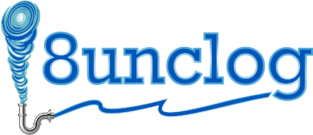Answers to FAQ
DIY Drain Maintenance
Clean drains are key to guaranteeing the health of your home’s plumbing overall. While there are several ways to do accomplish this, the best (and easiest) way is practicing regular drain maintenance. We’ve highlighted some key information and guidelines to help you keep your drains healthy.
This is a short but important list. First things first: never pour liquid fats, oils, or grease down the drain. As they cool, they become more solid and cling to the insides of pipes, building up into clog-inducing paste. Other things that shouldn’t go down your drains include:
- Coffee grounds, because they stick to pipe walls and build into a paste when pressed into small areas.
- Eggshells, because their edges catch on other items and grow into larger clogs.
- Unused medications, because they could leach into water reservoirs.
- Hair….the most obvious culprit.
The answer is never liquid drain cleaners, if you want to maintain the integrity of your drains and pipes. Liquid drain cleaners can’t tell the difference between the clog and the pipe. When a chemical drain cleaner finishes eating through a clog, it continues eating away at your pipes. Instead, try these other, less costic ways of maintaining clear drains:
- Pour a large pot of very hot (not boiling) water down a household drain. Follow it with some cool water to flush the clogs you just melted away.
- You can also use baking soda and vinegar. We recommend this treatment about once a month. Simply pour half a cup of baking soda down your drain and follow with half a cup of vinegar. Plug the sink and let it sit overnight. Flush the drains with hot water in the morning. This will help maintain the flow and smell of your drains.
These three basic tools are handy and inexpensive: an auger, a snake, and a cup plunger. They all work to help remove clogs when they occur despite your best preventive efforts. While cup plungers work on small clogs, the snakes and augers work on bigger ones.
Maintenance techniques help prevent the build up in the first place. However, if you’ve been sending things down the drain (including the toilet) that you shouldn’t be—like eggshells, coffee grounds, feminine products, “flushable” wipes, or hair in the shower—you may end up with much of these items in your pipes that can neither dissolve nor move further into the sewer system. When that happens, you need the help of a professional drain cleaner to get the clog loose. Baking soda and vinegar just won’t cut it.
And remember to stay away from chemical drain cleaners! They will eat away at your pipes and they often don’t solve your problem. Frequently trying to fix a clogged drain yourself can not only be frustrating, but can make things worse. Your time, energy and money is better spent on professional drain cleaning.
What Happens During a Drain Cleaning Service Call?
Our drain cleaning team will greet you in a friendly, professional manner and put on shoe covers to protect your floors before entering your home. Then we will:
- Ask some questions – We will get more background on the history of your home, the plumbing system; if you have had drainage, sewage, or plumbing problems before and if so, what they were.
- Set a straight forward plan for the service upfront – So that you fully understand the investigative process, that includes the drain cleaning service and the camera inspection.
- Perform diagnostics – We will test your plumbing fixtures for the locations of any stoppages to determine which equipment is the best solution for situation.
- Next, you can schedule an appointment for our service.
- Or we will begin immediately and…
- Set up for service – establishing clear access to the area that needs to be serviced. We will always lay down drop cloths to protect your home during the cleaning.
- Run the drain cleaning machine – This is when the cleaning happens! Our machine will clear the affected lines of the standing sewage. If, however, we believe the clog is located outside or the line cannot be cleared, then we will advise you that an immediate video pipe inspection is required to determine the exact problem.
- Test your fixtures – Once the sewage has been drained out of the affected lines then, we will turn on several fixtures at the same time to test flow.
- Conduct a final camera inspection – After cleaning your drain and sewage lines, we will then perform a video pipe inspection. This will allow us to identify any problems that caused your lines to clog; which may reveal damaged or broken sewer lines. Our technician will advise you if the sewer line needs to be repaired or replaced in order to avoid repeat clogs.
-
To clean a typical drain takes about 1 1/2 hours per drain.
To schedule professional drain cleaning service for your home, call 804-886-2564.

